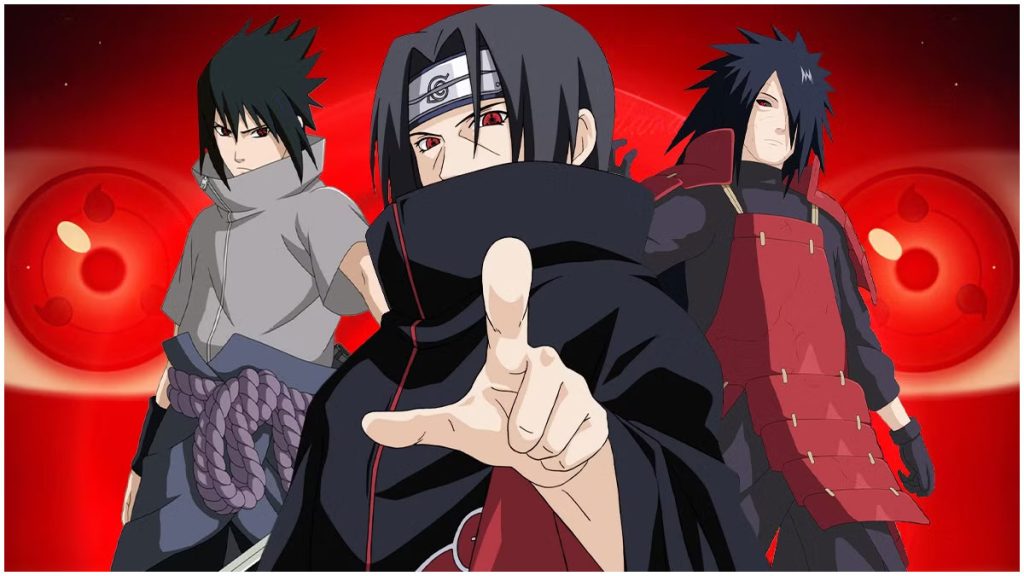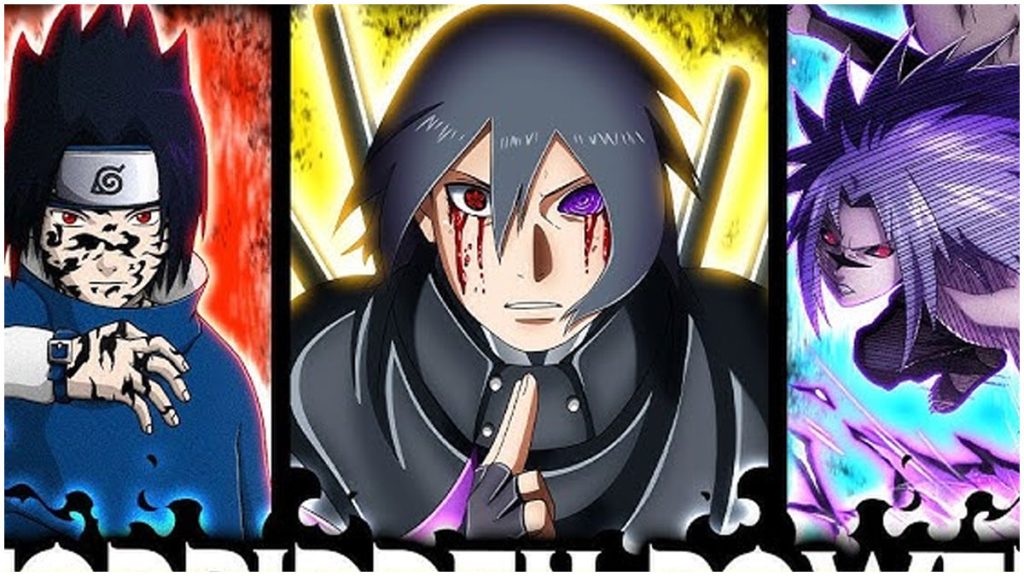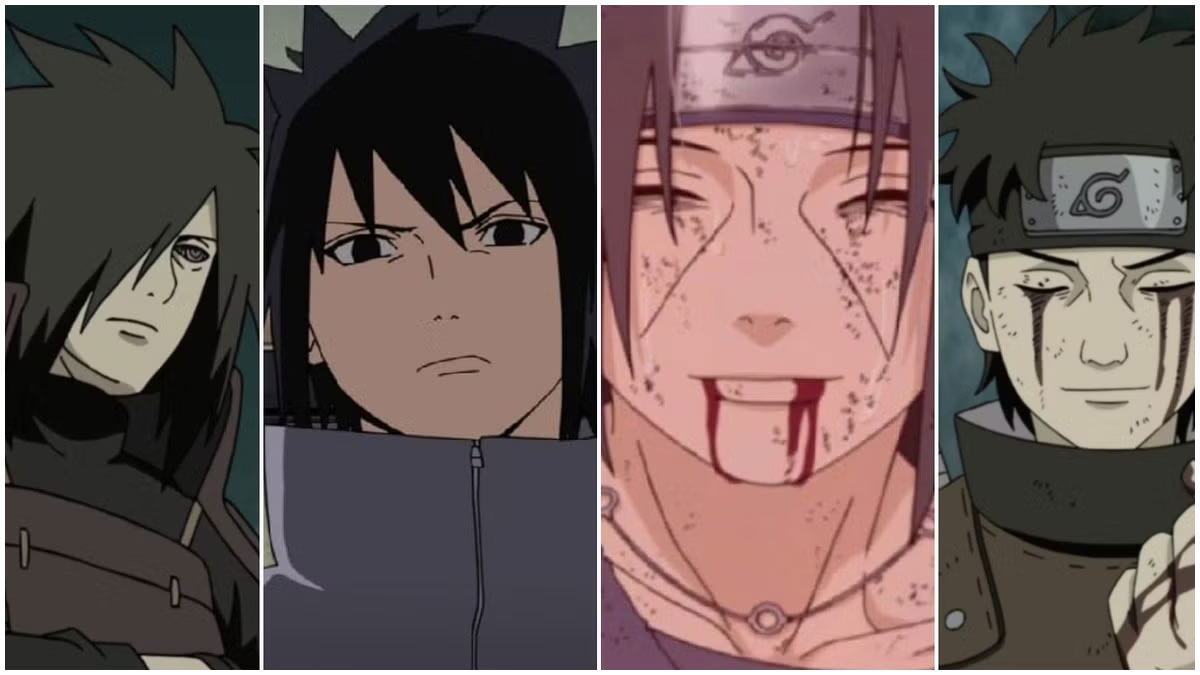MPAPER – The Uchiha Clan stands as one of the most iconic and complex families in the Naruto universe, representing both extraordinary power and devastating tragedy. As one of the founding clans of Konohagakure, the hidden leaf village, the Uchiha bloodline carries immense significance throughout the entire narrative of Masashi Kishimoto’s masterpiece. Their story weaves through themes of loyalty, betrayal, redemption, and the cyclical nature of hatred that defines much of the ninja world.
Origins and Foundation

Established centuries before the events of Naruto, the Uchiha Clan emerged as one of the most formidable shinobi families in the land of fire. Alongside the Senju Clan, led by Hashirama Senju, the Uchiha played a crucial role in founding Konoha. Madara Uchiha, one of the clan’s most powerful members, initially worked alongside his rival Hashirama to create a village where their descendants could live peacefully. However, ideological differences eventually drove a wedge between these two legendary figures, leading to conflict that would echo through generations.
The clan’s distinctive sharingan eye technique became their hallmark, granting them incredible combat abilities and setting them apart from other ninja families. This dojutsu, or eye technique, evolved through various stages, ultimately reaching its pinnacle with the legendary mangekyo sharingan and later the eternal mangekyo sharingan.
The Sharingan: Gift and Curse

At the heart of Uchiha identity lies the sharingan, a powerful ocular jutsu that manifests during moments of intense emotion, particularly loss or trauma. This crimson eye grants its wielder enhanced visual perception, allowing them to predict enemy movements, copy techniques, and cast genjutsu of unparalleled strength. The sharingan typically appears with two tomoe, but advanced forms feature three tomoe, indicating greater mastery.
What makes the sharingan truly dangerous is its evolution into the mangekyo sharingan, achieved through experiencing the trauma of losing someone dear. Each mangekyo sharingan is unique to its user, manifesting different abilities ranging from Amaterasu’s black flames to Susanoo, a massive ethereal warrior. However, prolonged use of the mangekyo sharingan leads to blindness, necessitating the acquisition of another’s eyes to achieve the eternal mangekyo sharingan, which eliminates the side effects while maintaining power.
Notable Clan Members
Several Uchiha members left indelible marks on the Naruto world. Madara Uchiha, the clan’s co-founder, became obsessed with achieving peace through control, ultimately becoming one of Naruto’s greatest adversaries. His younger brother Izuna sacrificed his eyes to save Madara, demonstrating the clan’s internal bonds despite external conflicts.
Fugaku Uchiha, the clan head during the main storyline, struggled to balance his duties to Konoha with his family’s growing dissatisfaction. His eldest son, Itachi, would become the most tragic figure in the clan’s history. Despite his gentle nature, Itachi was forced to make an impossible choice when the clan planned a coup against Konoha. To prevent civil war and protect his younger brother Sasuke, Itachi slaughtered his entire family, sparing only Sasuke to fuel his desire for revenge.
Sasuke Uchiha, the series’ primary antagonist for much of the story, embodied the clan’s struggle with darkness and vengeance. His journey from avenging survivor to understanding his brother’s sacrifice represents one of anime’s most compelling character arcs. Through his experiences, Sasuke learned that the cycle of hatred could be broken through understanding rather than retribution.
The Clan’s Downfall
The Uchiha Massacre remains one of the darkest chapters in Konoha’s history. Growing tensions between the clan and the village leadership culminated in a planned coup that threatened to destroy everything the founders had built. Caught between loyalty to his village and protection of his family, Itachi made the ultimate sacrifice, eliminating his clan while preserving Konoha’s stability.
This event shaped Sasuke’s entire worldview, driving him toward darkness and a quest for power that nearly consumed him. The massacre also revealed deeper conspiracies within Konoha’s government, showing how political machinations could destroy even the strongest familial bonds.
Legacy and Redemption
Despite their tragic history, the Uchiha legacy extends far beyond destruction. Through Sasuke’s eventual redemption and his daughter Sarada’s emergence as a new generation of Uchiha, the clan finds hope for renewal. Sarada inherits her father’s sharingan while embodying values of compassion and understanding that previous generations struggled to maintain.
The clan’s techniques continue to influence the ninja world, with sharingan abilities being studied and adapted by other villages. Kakashi Hatake, who received Obito’s sharingan eye, demonstrated how these powers could be used for protection rather than domination.
Cultural Impact
Beyond the Naruto universe, the Uchiha Clan has left an indelible mark on popular culture. Their distinctive fan symbol, red and white color scheme, and dramatic storylines have inspired countless cosplayers, artists, and fans worldwide. The complexity of characters like Itachi, who committed atrocities for noble reasons, sparked discussions about morality and the nature of heroism in fiction.
Merchandise featuring Uchiha imagery remains popular among anime enthusiasts, while their techniques continue to be analyzed and debated in online communities. The clan’s philosophy of protecting loved ones at any cost resonates with audiences who understand the weight of difficult choices.
Symbolism and Themes
The Uchiha Clan serves as a vehicle for exploring several profound themes throughout Naruto. Their story illustrates how trauma can perpetuate cycles of violence, showing how each generation inherits both power and pain from those who came before. The contrast between Itachi’s self-sacrifice and Sasuke’s initial path of vengeance demonstrates how identical circumstances can produce vastly different outcomes based on perspective and choice.
Fire symbolism permeates the clan’s identity, reflecting both passion and destruction. Their elemental affinity for fire release techniques mirrors their intense emotions and the consuming nature of their conflicts. This duality of creation and destruction runs throughout their narrative, showing how the same power that protects can also devastate.
Modern Relevance
In contemporary discussions about mental health and trauma, the Uchiha Clan’s experiences offer valuable insights. Characters like Sasuke demonstrate how unresolved grief and anger can lead to destructive behavior, while Itachi’s story shows how individuals might make unimaginable sacrifices for the greater good. These narratives encourage viewers to consider the complexity of human motivation and the impact of childhood experiences on adult behavior.
The clan’s emphasis on family bonds, even when strained by external pressures, speaks to universal themes of belonging and identity. Their struggle to maintain their heritage while adapting to changing times reflects challenges faced by many real-world communities navigating modernization and tradition.
Conclusion
The Uchiha Clan represents one of fiction’s most compelling explorations of power, family, and redemption. Through their tragic history and ultimate path toward healing, they demonstrate that even the deepest wounds can eventually mend. Their legacy continues to inspire new generations of fans while offering timeless lessons about the importance of understanding over vengeance.
As the Naruto universe expands with new stories and characters, the Uchiha influence remains strong, proving that truly great storytelling creates legacies that extend far beyond their original context. Whether viewed as cautionary tales about the dangers of unchecked ambition or inspiring stories of redemption and growth, the Uchiha Clan will undoubtedly continue to captivate audiences for years to come.
Their journey from founding fathers to tragic outcasts and finally to hopeful ancestors reflects the human experience in all its complexity, making them more than mere fictional characters – they’ve become symbols of our own struggles with power, family, and the choices that define us.
